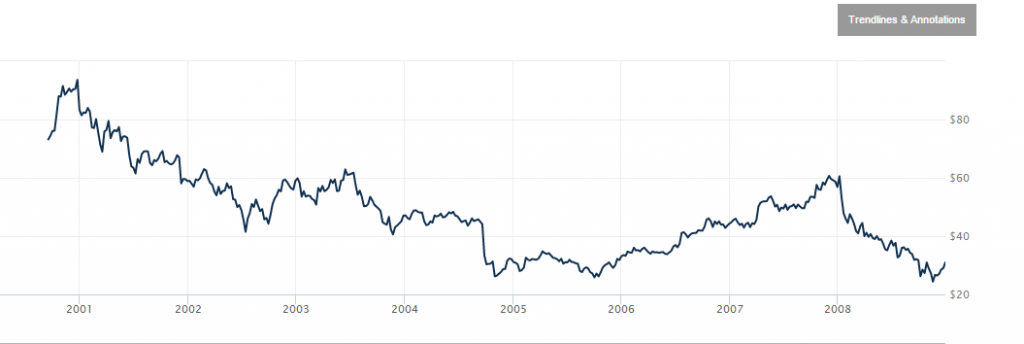At the most straightforward (superficial?) level, the “undisciplined pursuit of more”—Collins’s stage 2 in his framework of decline—would seem to follow logically and almost inevitably from stage 1, “hubris born of success.” The logic is nearly syllogistic: “If we’re successful, and we’re great, who wouldn’t want more of this? Let’s go for it.”
Collins, I’m happy to report, thinks more subtly than that, and has the evidence to back it up. He begins by trying to disabuse us of a near-universal assumption: That most companies fall from greatness because they become complacent, failing to stimulate innovation, to ignite internal change, and whose mindset moves from one of bold action-orientation to laziness and self-satisfaction. His take on that?
It’s a plausible theory, with a problem: it doesn’t square with our data.
To be sure, complacency can be death. But according to Collins, that’s not very often the source of the mortal threat. Far more prevalent is the sin of overreaching. Three of the fallen stars of Built to Last were Motorola, HP, and Merck. Complacency scarcely seems to describe their frenzied activity as decline set in:
- From 1991 to 1995, Motorola nearly doubled its patent production, from 613 to over 1,000, “ranked No. 3 in the US,” according to the company.
- In 1999, HP launched its “Invent” campaign and also nearly doubled its patent applications.
- Merck patented 1,933 new compounds from 1996 to 2002, the best performance in the industry, and one-third higher than the runner-up.
Yet all went into severe decline:
- Motorola was broken up and essentially sold for parts.
- HP is still trying to recover its totemic Silicon Valley mojo after years of head-scratching acquisitions at enormous expense, boardroom infighting, backstabbing, and lawsuits, hasty and diamond-encrusted executive departures, and mystifying reorganizations.
- And Merck stock hit its all-time high at the end of 2000 and a decade later was down over 75%.
So why this widespread belief in the theory that complacency is the common downfall of leading organizations? Collins attributes it, plausibly I believe, to psychology; we are victims, not for the first time, of what we want to believe, and he punctuates it with an example from our near-past that turns the theory on its head (emphasis Collins’):



